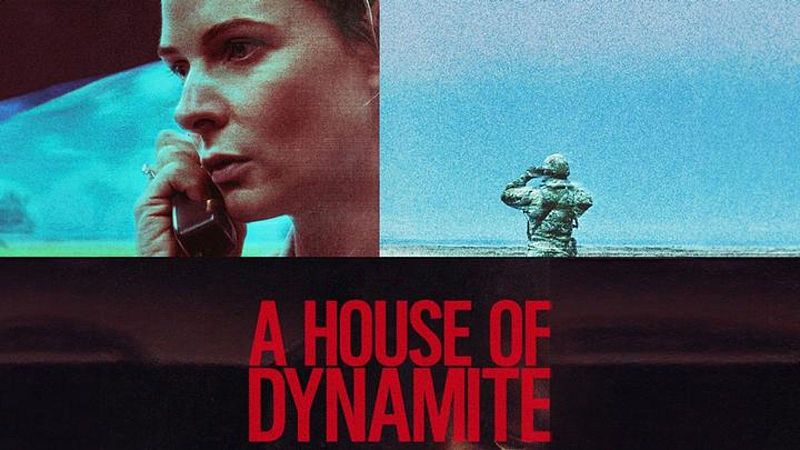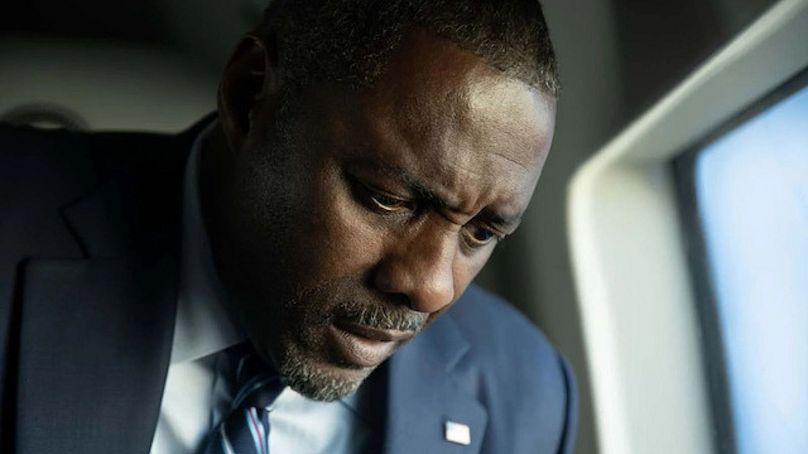Euronews Culture's Film of the Week: 'A House of Dynamite' - Is Kathryn Bigelow back with a bang?

“At the end of the Cold War, global powers reached the consensus that the world wouldbe better off with fewer nuclear weapons,” we’re told via big bold lettering in the opening of A House of Dynamite. “That era is now over.”
What starts as an ordinary day for Major Daniel Gonzalez (Anthony Ramos) at the 49th Missile Defense Battalion, Fort Greely, Alaska, will confirm the statement, as his morning rapidly escalates into a hellscape which could precipitate global nuclear war.
An ICBM (Intercontinental Ballistic Missile) has been launched. No one can identify a definitive launch site. Nobody knows what geopolitical power is behind it. What becomes alarmingly clear is that it is not a test and that it’s headed straight for Chicago. Impact: 19 minutes and counting.
Once appraised of the situation, Captain Olivia Walker (Rebecca Ferguson) conducts the real-time response in the WHSR (White House Situation Room). DEFCON 4 (Defense Readiness Condition – increased intelligence watch and strengthened security measures) quickly turns to DEFCON 2 (next step to nuclear war), with Admiral Mark Miller (Jason Clarke) asserting: “Our job is not to solve the puzzle, it’s to find the pieces and send them up the chain. We got this.”
They don’t. Especially when the GBI (Ground Based Interceptor) and its EKV (Exoatmospheric Kill Vehicle) fail to shoot down the ICBM, which becomes a massive headache for STRATCOM (Strategic Command) and the PEOC (Presidential Emergency Operation Center), who need to figure out whether or not to retaliate. And if they do, against whom and at what cost?
For Kathryn Bigelow’s first movie in eight years, the Oscar-winning director of The Hurt Locker takes your greatest nuclear fears, throws a first-class roster of performers into the explosive mix and, as you may have noticed, heavily peppers the powder keg with a litany of impenetrable acronyms.
The opening – titled “Inclination is flattening” - is nerve-shredding, featuring a commanding turn from Ferguson and impressive levels of detail which lend the white-knuckle tension a discomforting air of plausibility.
The clock counts down and then... Reset.
A House of Dynamite reveals itself as a narrative split into three parts, with each chapter covering the same events told from different perspectives, each ending on the same cliffhanger.
The second, “Hitting a bullet with a bullet”, focuses on General Brady (Tracy Letts), who isn’t quite as manic as General Buck Turgidson in Stanley Kubrick’s Dr. Strangelove or: How I Learned To Stop Worrying And Love The Bomb, but shares his 1964 counterpart’s desire for pre-emptive counterstrikes. This segment also features North Korea expert Ana Park (Greta Lee) and NSA advisor (Gabriel Basso), who’s advocating for calm and communication.
For the third part of the triptych, “A house filled with dynamite”, we witness events through Secretary of Defense Reid Baker (Jared Harris) and POTUS himself (Idris Elba).
It's a bold structure, but a segmentation which frustratingly flatlines the tension and yields diminishing returns.
What a damn shame, as Bigelow previously tackled mutually assured destruction in 2002’s K-19: The Widowmaker and the prospect of her leaving individual character studies like those in The Hurt Locker and Zero Dark Thirty to embrace an ensemble piece was tantalizing. However, her considerable filmmaking talents, as well as her understanding that anticipation is significantly more terrifying than any visual depiction of destruction, feel undercut by the efforts of former NBC executive and Jackie screenwriter Noah Oppenheim, whose gimmicky timeline rewinds ensure the cast feels uniformly underused.
Worse, his screenplay tanks the inherently gripping atmosphere of the first act, and brims with overearnest moments. Cutaways of children going to school; soldiers overcome with panic and needing to throw up; even a wee dinosaur toy reminding you that children are the future and there may be none to leave behind.
There’s a case to be made for fully humanizing protagonists within a sobering portrait of impending nuclear annihilation, allowing for some tears and open mouth action for the sake of relatability. But when every top-level government employee is depicted as conscientious, ethical and self-aware, it all starts to feel like naive wish fulfilment. Especially in 2025, when we’re faced with the most unserious American government in modern history.
For every moment of effective and distressing realism, there's a groan-inducing exchange (“This is insanity” / “No, sir, this is reality”), another rumble from the monotonous score by Volker Bertelmann, and even a death which completely misses its mark, feeling more farcical than harrowing. And when certain elements in your film are unavoidably reminiscent of Dr. Strangelove (the big board, the nuclear playbooks), the last thing you want is a sobering moment making you LOL. The less said about the film's insultingly abrupt conclusion, the better.
For all these many gripes, A House of Dynamite does remain a broadly effective thriller - just one that fails to live up to its electrifying premise. Had Bigelow been working with a better script, it could have been a chilling insider procedural to place proudly next to Sidney Lumet’s Fail Safe and Mick Jackson’s Threads. As it stands, it’s not completely FUBAR, but it's certainly not GOAT.
A House of Dynamite premiered in Competition at this year’s Venice Film Festival and is streaming on Netflix now.




